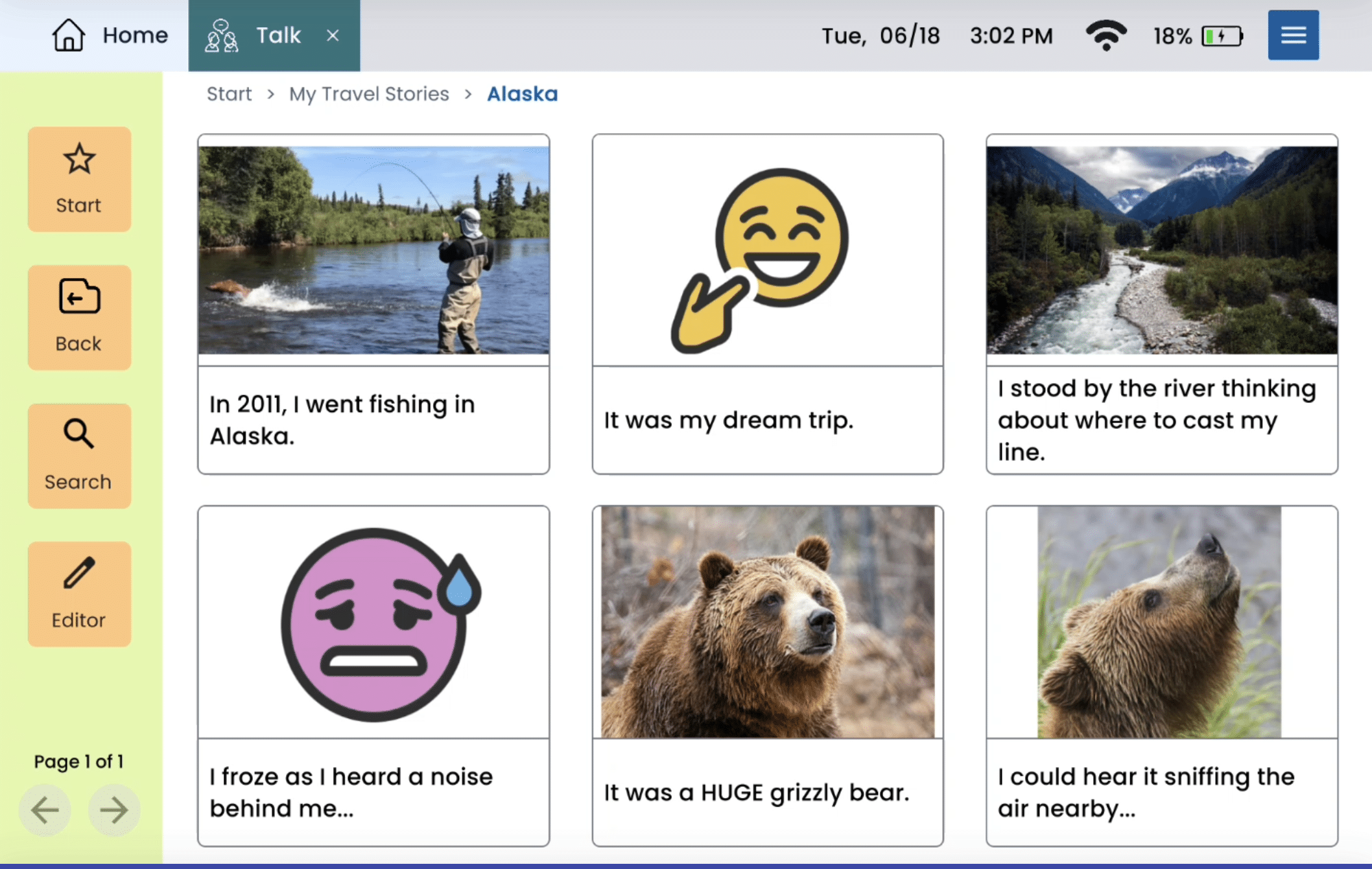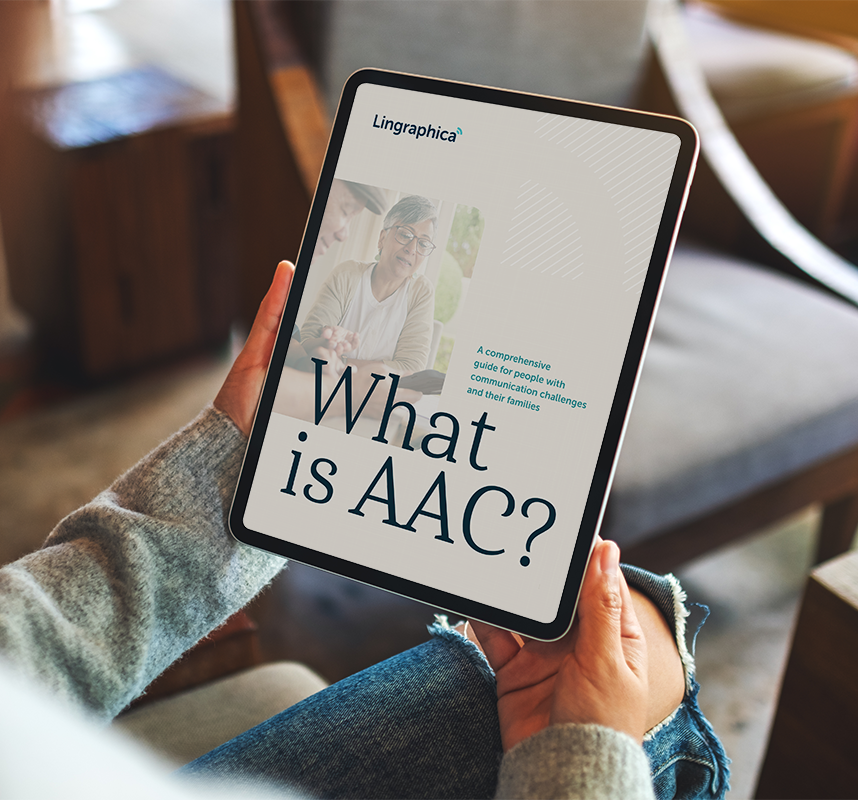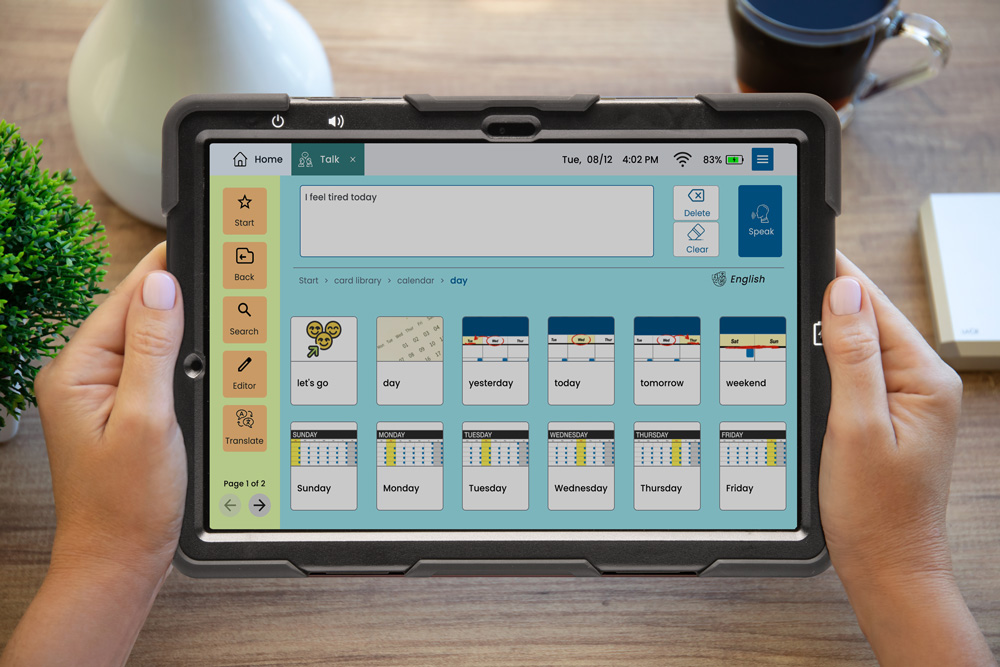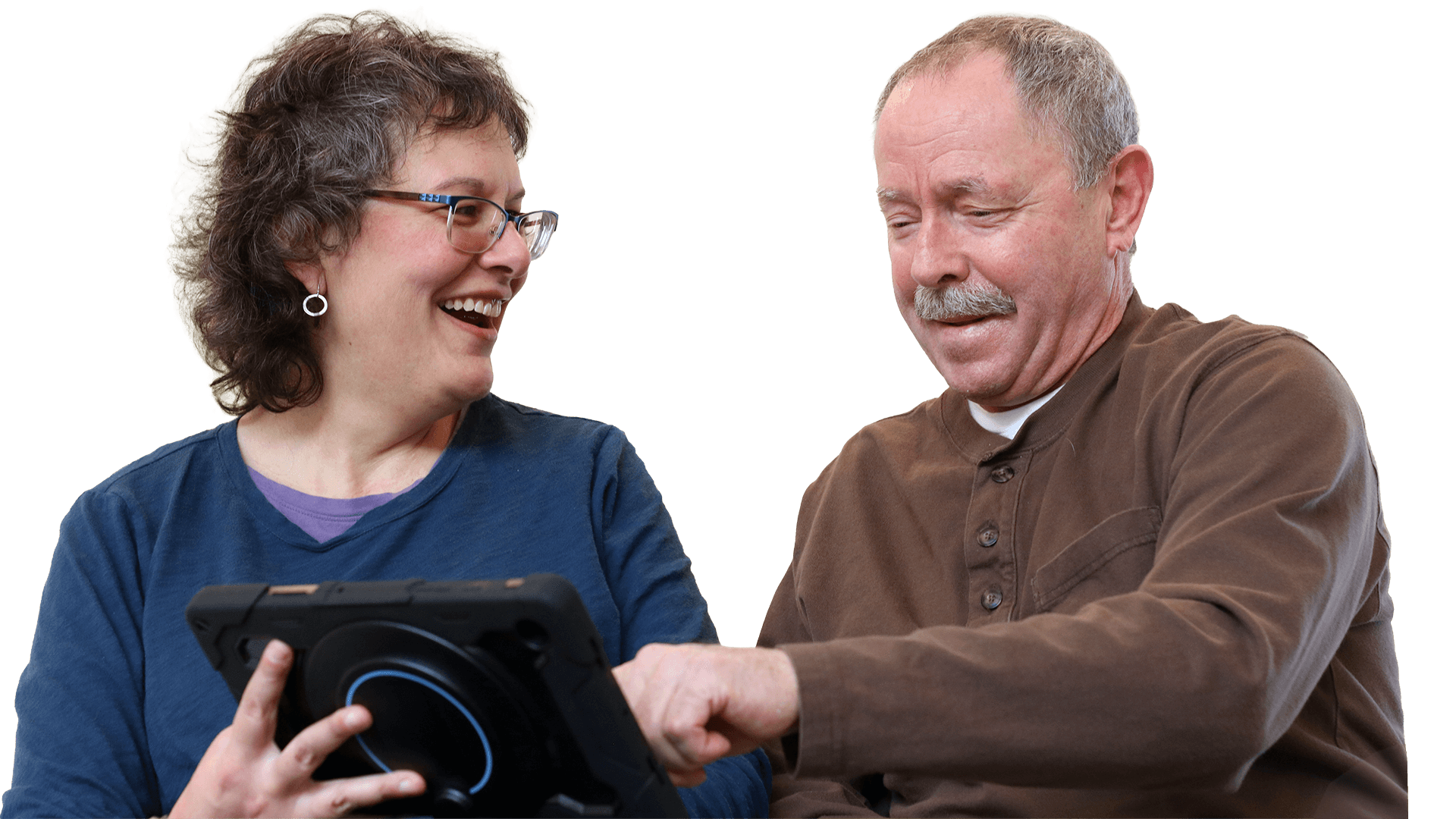
- Myth #1: AAC is only for non-speaking people
- Myth #2: AAC is a last resort after traditional therapy has run its course
- Myth #3: AAC will prevent the user from improving verbal speech
- Myth #4: Low-tech AAC must be targeted before trying high-tech AAC
- Myth #5: A user must be independent in order to be successful with AAC
Deciding who is a good candidate for AAC can feel difficult because of several pervasive myths about high-tech AAC. Here are some of the most common myths and realities when it comes to using AAC.
Myth #1: AAC is only for non-speaking people
Reality: AAC can help many different people! While some AAC users are non-speaking, many others do retain some ability to speak. For example, a person may have strong automatic speech but struggle to tell a story. Or, they may repeat words but struggle to initiate conversation. If there is a gap between what your client wants to say and what they are able to say, then some type of AAC might benefit them. In fact, using an AAC device can help build even more verbal speech.
Myth #2: AAC is a last resort after traditional therapy has run its course
Reality: There’s no need to wait before you introduce AAC! Research with people with aphasia shows that the early introduction of AAC combined with traditional speech therapy improves language recovery and confidence when communicating (Dietz, Wallace, & Weissling, 2020). Regaining speech is an important goal for many clients, and introducing an AAC device early supports this by helping your client meet their immediate communication needs and serving as a valuable tool in therapy. Just like physical therapists don’t wait to introduce a walker, SLPs can also empower their clients with the tools they need to communicate right away.
Myth #3: AAC will prevent the user from improving verbal speech
Reality: Using an AAC device can have a beneficial impact on speech and language (Dietz et. al, 2018). Lingraphica’s AAC devices are built based on years of research demonstrating that the use of an AAC device improves language abilities in the aphasia population. Furthermore, individuals can use an AAC device to cue their own speech through hierarchical prompting and repetition. One anecdote we hear at Lingraphica time after time is how much a client’s verbal speech started improving after an AAC device was introduced.
Myth #4: Low-tech AAC must be targeted before trying high-tech AAC
Reality: There’s no evidence to suggest that your clients must try low-tech AAC before trying high-tech AAC. Low-tech AAC — like pen and paper or a communication board — can be a great tool in some circumstances. However, for many clients, low-tech AAC is not functional or motivating due to the lack of voice output and the need for a partner to interpret it. Furthermore, many people are simply more engaged and motivated when using a modern, high-tech device that resembles the phones and tablets common in today’s world.
Myth #5: A user must be independent in order to be successful with AAC
Reality: While some users will become fully independent with their Lingraphica devices, many AAC users benefit from some level of partner support. This might involve help with basic tasks like charging the device, adjusting settings, or navigating between pages. But here’s the key: a partner-dependent user is still a successful user if the device helps improve their communication. Success with AAC isn’t about independence; it’s about achieving better communication.
About Contributor
Lingraphica helps people with speech and language impairments improve their communication, speech, and quality of life. Try a Lingraphica AAC device for free.













